Abstract
1. A 2° test stimulus foveally fixed and viewed against a blue background (40° in extent and producing 2·0 × 104 scotopic td of retinal illuminance) evokes a small voltage which can be recorded from the human eye with a conventional contact lens electrode if the test stimulus is flashed at a rate of 15 c/s, and the responses to at least several hundred flashes are averaged.
2. The action spectrum of the response obtained in this way agrees reasonably well with the observer's psychophysical foveal luminosity curve.
3. For the peripheral retina, the action spectrum is similar to that of the fovea when allowance is made for differences in screening macular pigment.
4. Such responses diminish when the test stimulus is focused on to the peripheral retina and disappear when the test light is focused on the blind spot.
5. Therefore, the response to the test light fixated centrally is the result of the excitation only of cones mainly, if not exclusively, in the fovea.
6. When the intensity of the background is reduced by a factor of 10, the action spectrum shows evidence of the effect of excitation of rods in the blue part of the spectrum and of cones in the red. These red and blue responses add linearly when combined together, provided they are adjusted to coincide in phase.
Full text
PDF


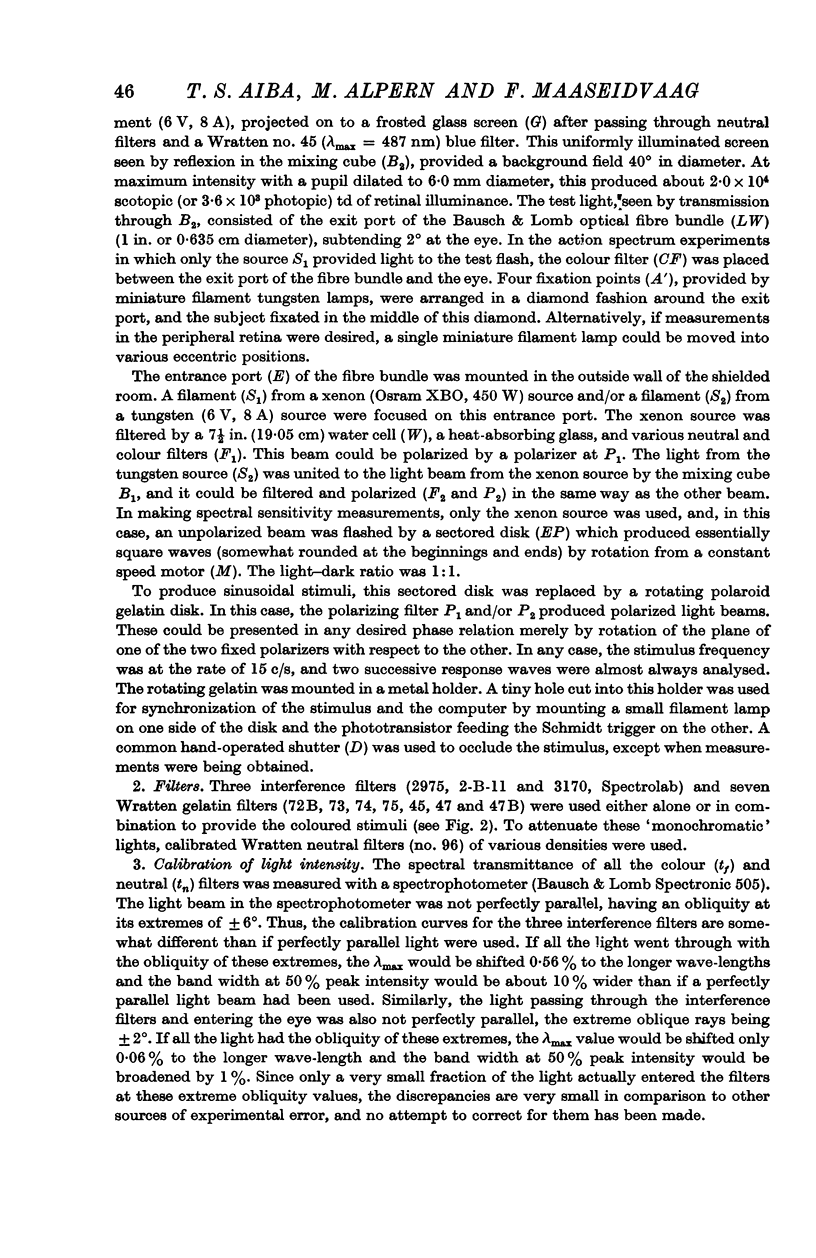

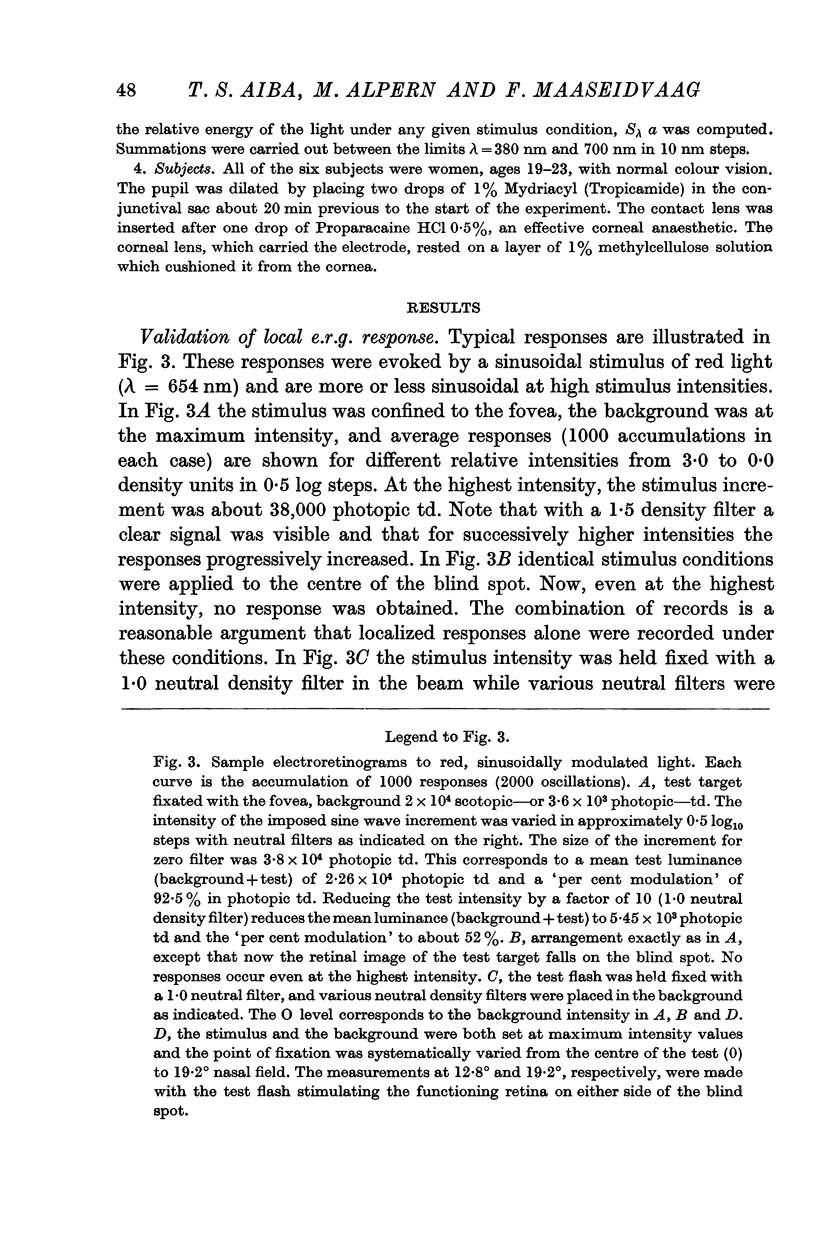
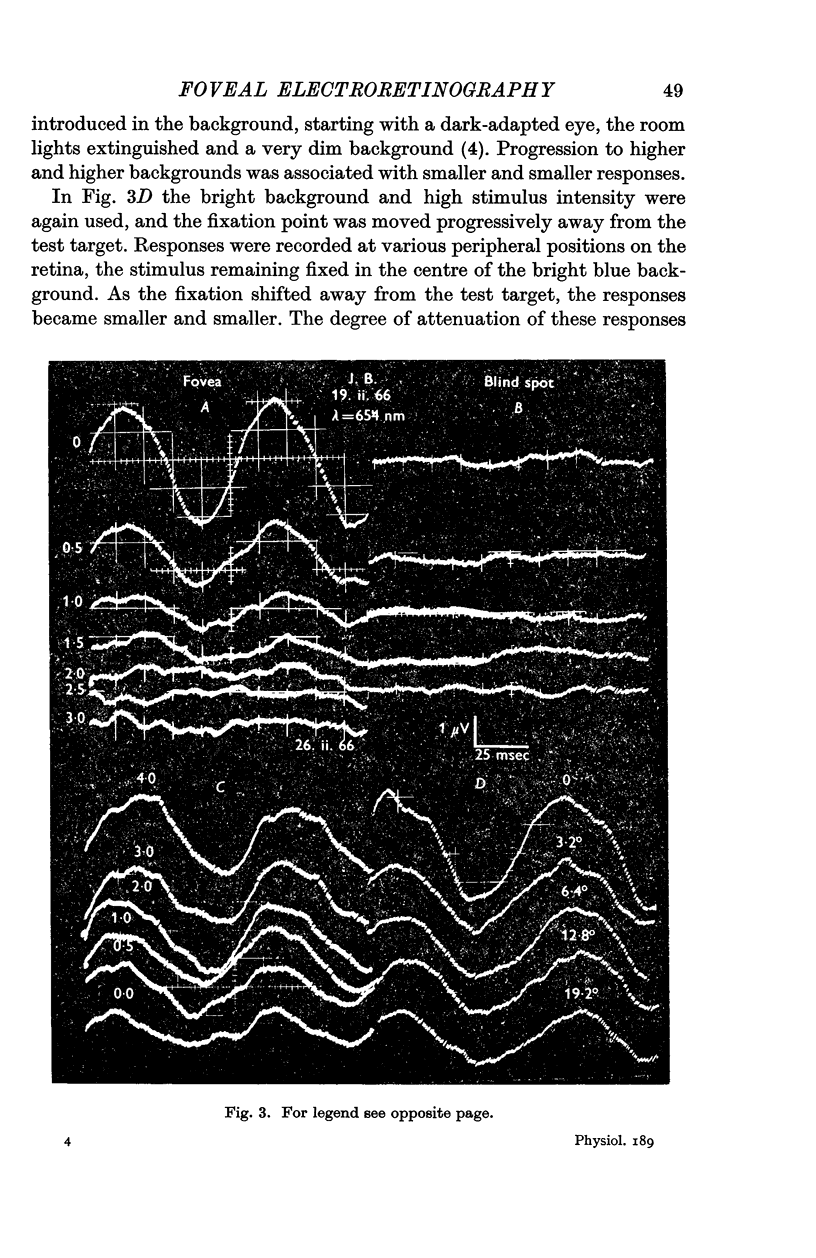
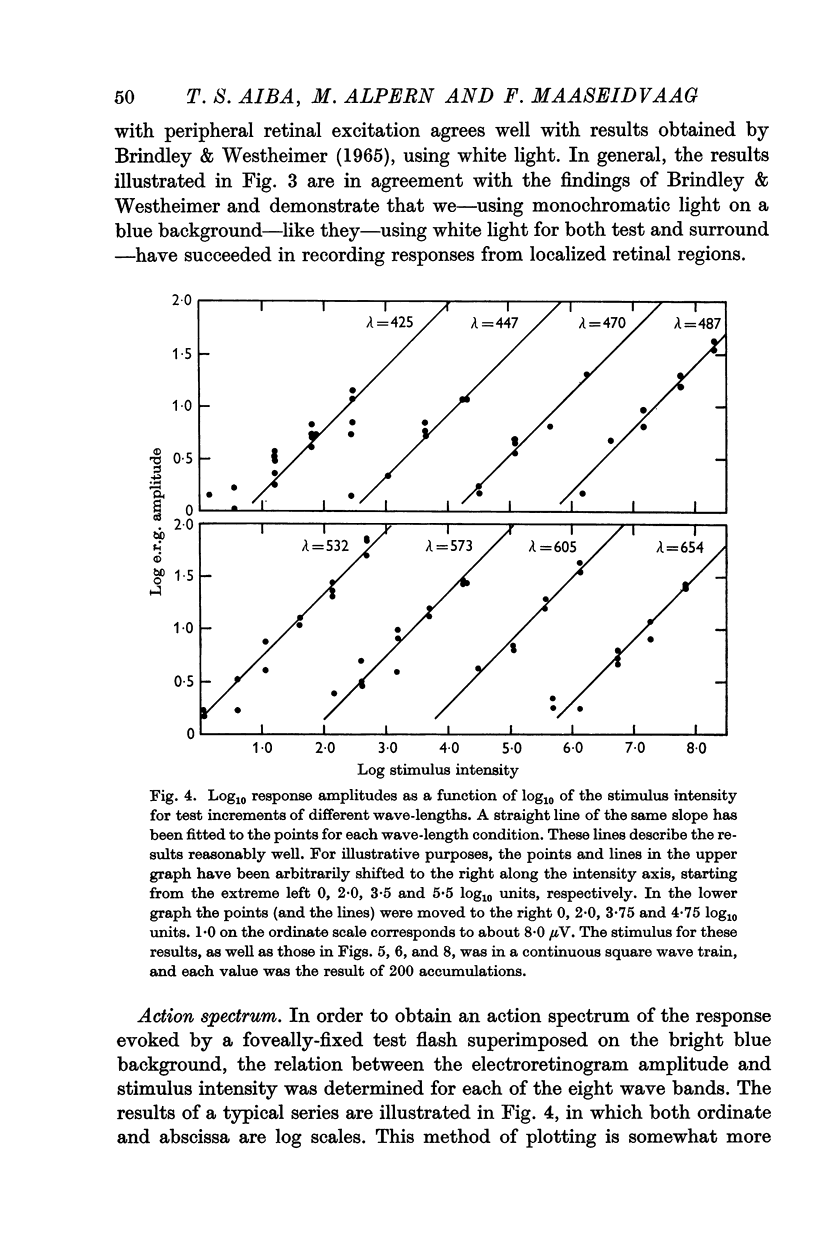
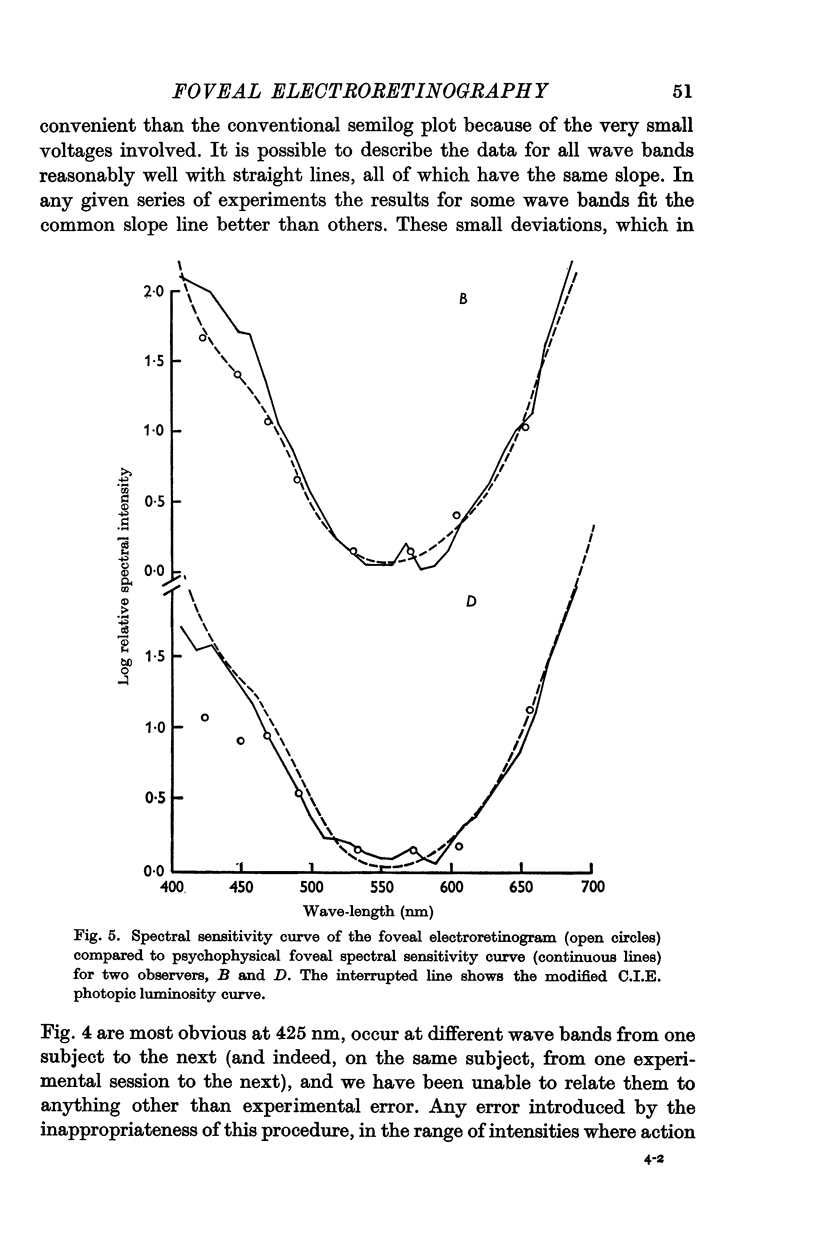
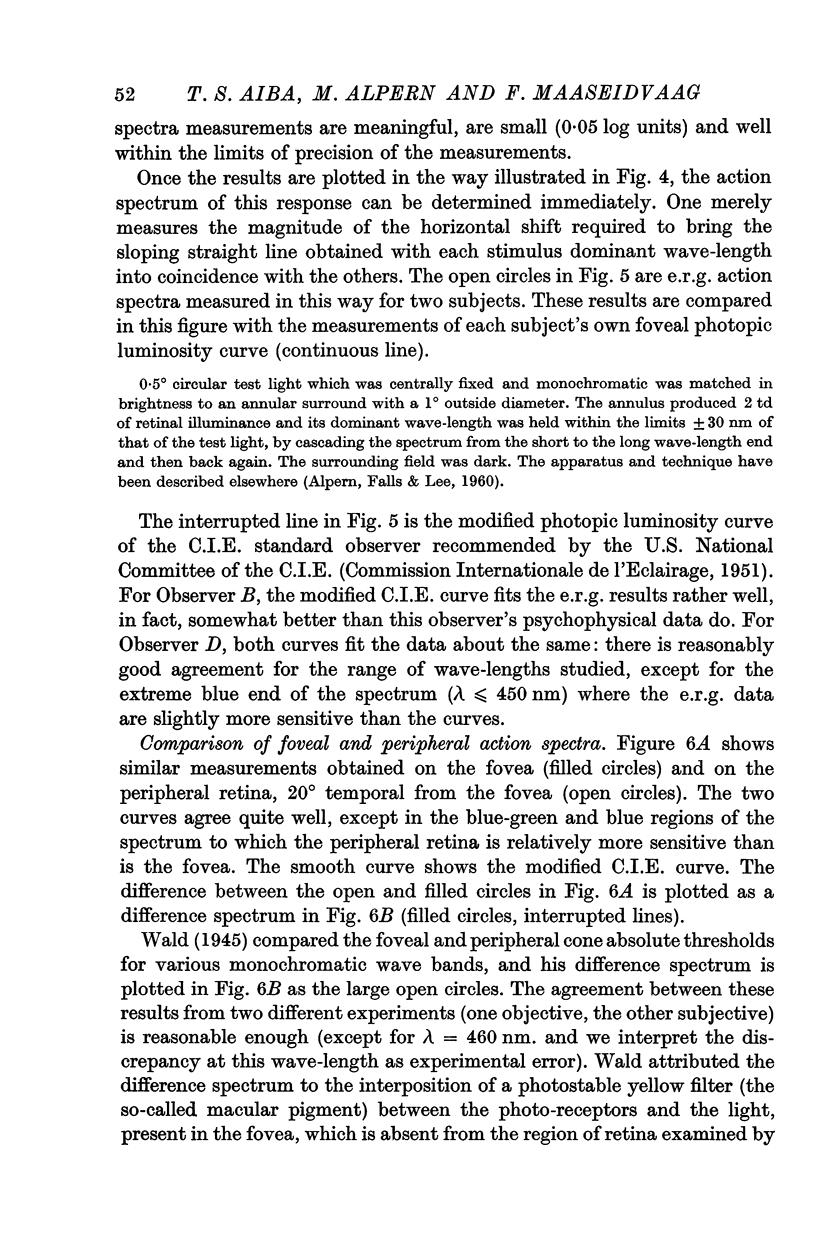


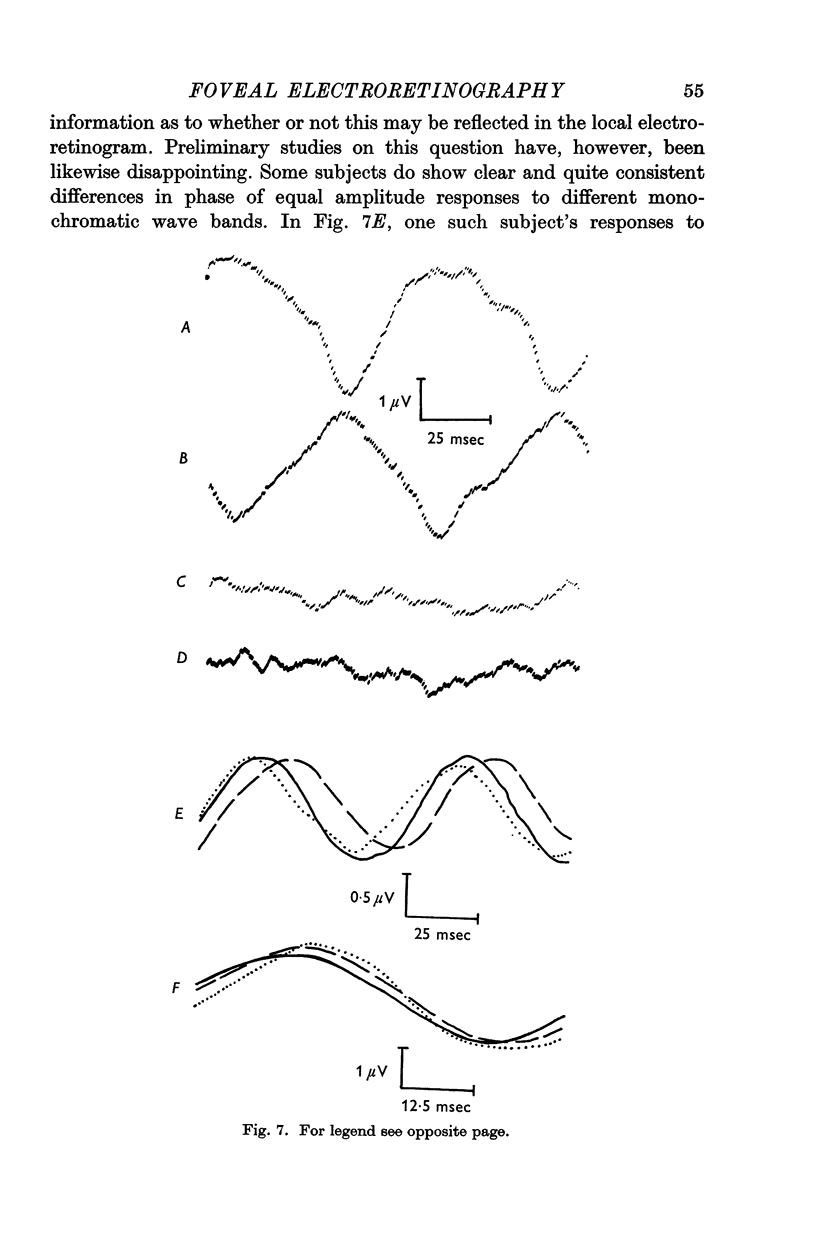
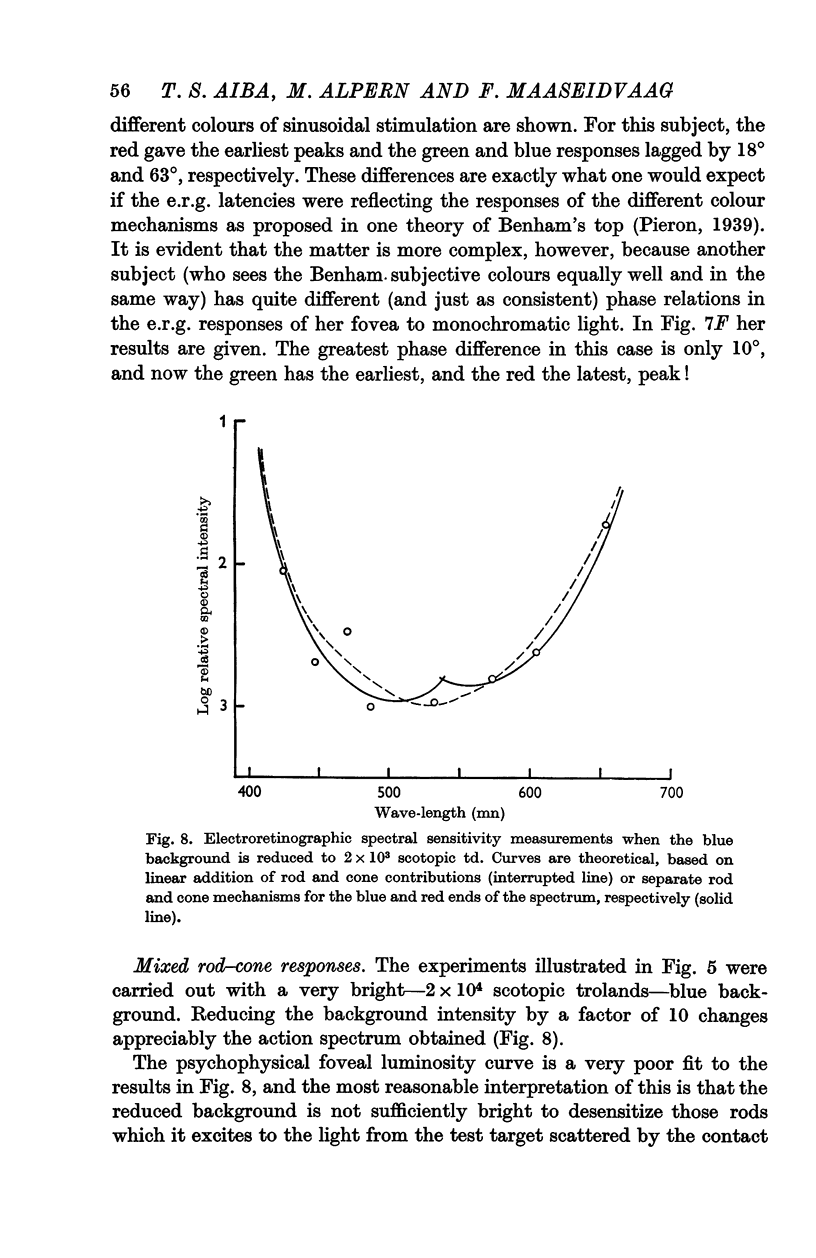
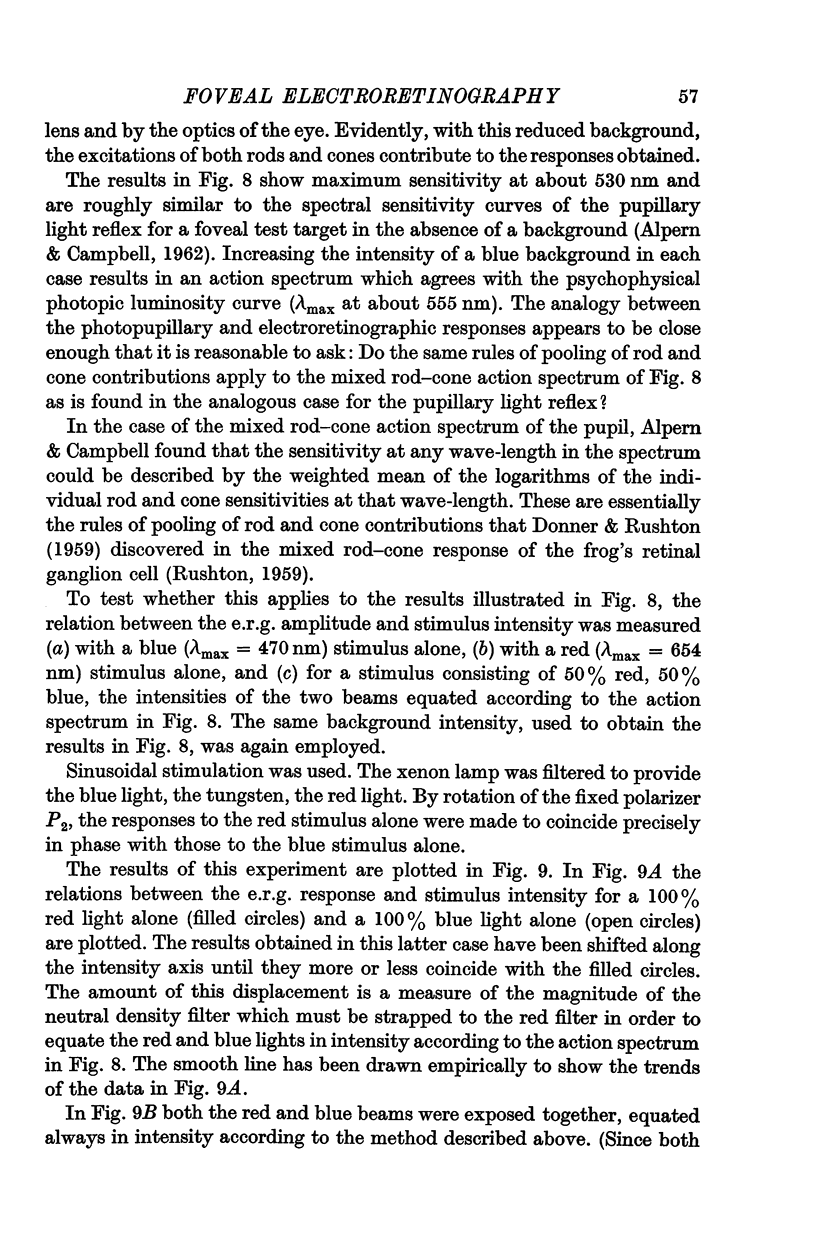
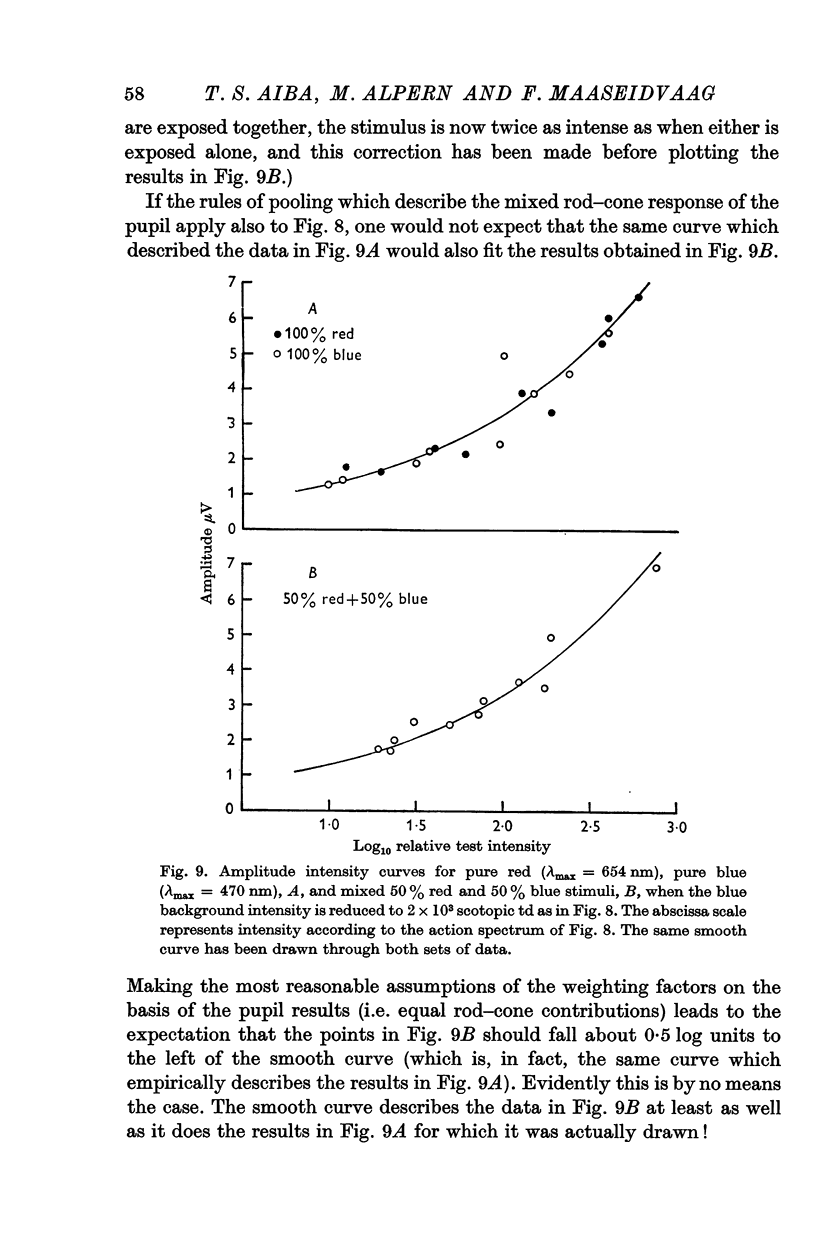




Selected References
These references are in PubMed. This may not be the complete list of references from this article.
- ALPERN M., CAMPBELL F. W. The spectral sensitivity of the consensual light reflex. J Physiol. 1962 Dec;164:478–507. doi: 10.1113/jphysiol.1962.sp007033. [DOI] [PMC free article] [PubMed] [Google Scholar]
- ALPERN M., FALLS H. F., LEE G. B. The enigma of typical total monochromacy. Am J Ophthalmol. 1960 Nov;50:996–1012. doi: 10.1016/0002-9394(60)90353-6. [DOI] [PubMed] [Google Scholar]
- ARMINGTON J. C., TEPAS D. I., KROPFL W. J., HENGST W. H. Summation of retinal potentials. J Opt Soc Am. 1961 Aug;51:877–886. doi: 10.1364/josa.51.000877. [DOI] [PubMed] [Google Scholar]
- Adrian E. D. The electric response of the human eye. J Physiol. 1945 Jun 29;104(1):84–104. doi: 10.1113/jphysiol.1945.sp004109. [DOI] [PMC free article] [PubMed] [Google Scholar]
- BOYNTON R. M., RIGGS L. A. The effect of stimulus area and intensity upon the human retinal response. J Exp Psychol. 1951 Oct;42(4):217–226. doi: 10.1037/h0057679. [DOI] [PubMed] [Google Scholar]
- BRIDGMAN C. S. The luminosity curve as affected by the relation between rod and cone adaptation. J Opt Soc Am. 1953 Sep;43(9):733–737. doi: 10.1364/josa.43.000733. [DOI] [PubMed] [Google Scholar]
- BRINDLEY G. S., WILLMER E. N. The reflexion of light from the macular and peripheral fundus oculi in man. J Physiol. 1952 Mar;116(3):350–356. doi: 10.1113/jphysiol.1952.sp004709. [DOI] [PMC free article] [PubMed] [Google Scholar]
- BURIAN H. M. Electroretinography and its clinical application. AMA Arch Ophthalmol. 1953 Mar;49(3):241–256. doi: 10.1001/archopht.1953.00920020248001. [DOI] [PubMed] [Google Scholar]
- Brindley G. S., Westheimer G. The spatial properties of the human electroretinogram. J Physiol. 1965 Aug;179(3):518–537. doi: 10.1113/jphysiol.1965.sp007678. [DOI] [PMC free article] [PubMed] [Google Scholar]
- Cooper S. A note on the retinal action potential of the human eye. J Physiol. 1933 Sep 4;79(2):185–190. doi: 10.1113/jphysiol.1933.sp003039. [DOI] [PMC free article] [PubMed] [Google Scholar]
- DONNER K. O., RUSHTON W. A. Rod-cone interaction in the frog's retina analysed by the Stiles-Crawford effect and by dark adaptation. J Physiol. 1959 Dec;149:303–317. doi: 10.1113/jphysiol.1959.sp006341. [DOI] [PMC free article] [PubMed] [Google Scholar]
- RUSHTON W. A. Excitation pools in the frog's retina. J Physiol. 1959 Dec;149:327–345. doi: 10.1113/jphysiol.1959.sp006343. [DOI] [PMC free article] [PubMed] [Google Scholar]
- Wald G. HUMAN VISION AND THE SPECTRUM. Science. 1945 Jun 29;101(2635):653–658. doi: 10.1126/science.101.2635.653. [DOI] [PubMed] [Google Scholar]


